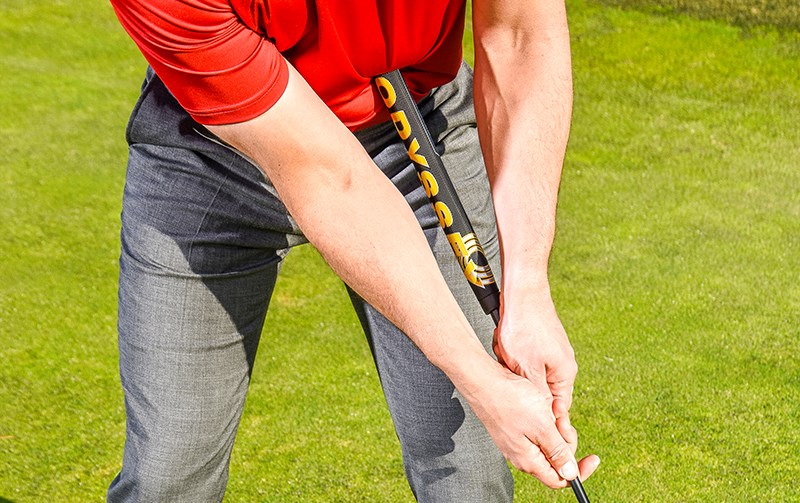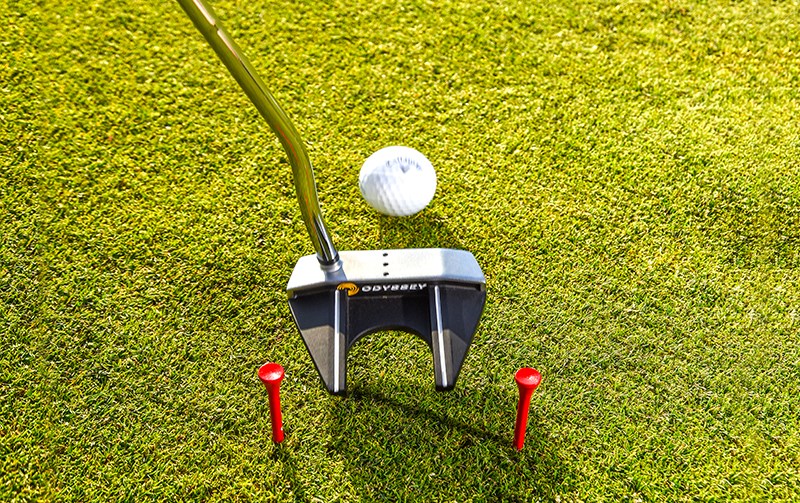A-Z Putting (D): Drills For Pure Putting
Published:
Drills for Pure Putting: Five go-to exercises that have stood the test of time
If you want some simple but effective drills to help you with your stroke, alignment and accuracy, then look no further.
These five drills all help with a different part of your putting, and are aimed to help you cut down the number of putts per round.
1. Belly Putting
One of the reasons belly putters worked so well was because they promoted the correct release of the putterhead. With the grip anchored in the stomach, the head was free to release past the handle in true pendulum style; contrast that with a stroke where the handle moves forward with the head, denying it the ideal acceleration and rotation.
Train The Feel
Of course anchoring is now illegal, but you can gain the same feel for the release by pushing the butt of your regular- length putter into your stomach and gripping on the metal. Swing back and through. Feel how, with the butt anchored, the head releases freely past the hands.
Smoother Release
Spend a while making this belly stroke, feeling how the putterhead wants to move. Then take your regular stance and hit several putts, channelling the feel of the stroke. You’ll feel able to create a more fluent release of the putterhead, one which promotes a smoother roll of the ball.

2. Tee Gate
Frame the putter head with two tee pegs. Quite simply hit a series of short putts, getting the putter to swing through the gate without catching either tee. This drill trains path and strike, as catching the inner tee means an inside attack/toe strike and hitting the outer tee means an outside attack and heel strike.
Training a pure path means no need for midstroke clubface manipulation and more consistent, less nervy putting.

3. High Side
Amateurs typically underborrow on breaking putts, but here is a drill that addresses it. Gather five balls. Find a curving putt on the practice green – it could be any length, from 5ft to 50ft.
Your simple mission is to ensure every putt either drops in the hole or passes it on the high side. Make this a regular part of your practice and you will improve your pace… and start to see more putts dropping in.

4. Black Mark
Get yourself a ball marker and draw a strong black line around the middle of the ball. Set the ball on the turf so the line is vertical.
Strike Barometer
Now hit putts. The black line provides great feedback on the quality of your contact. If the line remains upright as the ball rolls it reveals a pure, smooth, end-over-end roll. An oscillating line indicates either a skidding, bouncing strike o the blade or sidespin applied to the ball.
5. Twin Circles
This is a version of the famous clockface drill that asks you to hole putts in a circle around the hole. Set up an inner and outer ring of four golf balls, the first 3ft from the cup and the second 5ft away. Make sure the rings are offset so that no two putts go over the same slopes
Alternate Reality
Starting at any point, try to knock all eight balls in. Miss one and you must start again. This mimics course conditions by getting you to treat each putt as a separate event, and by adding pressure as you reach the last balls. If you complete it twice in a row, go to 4ft and 6ft circles.








